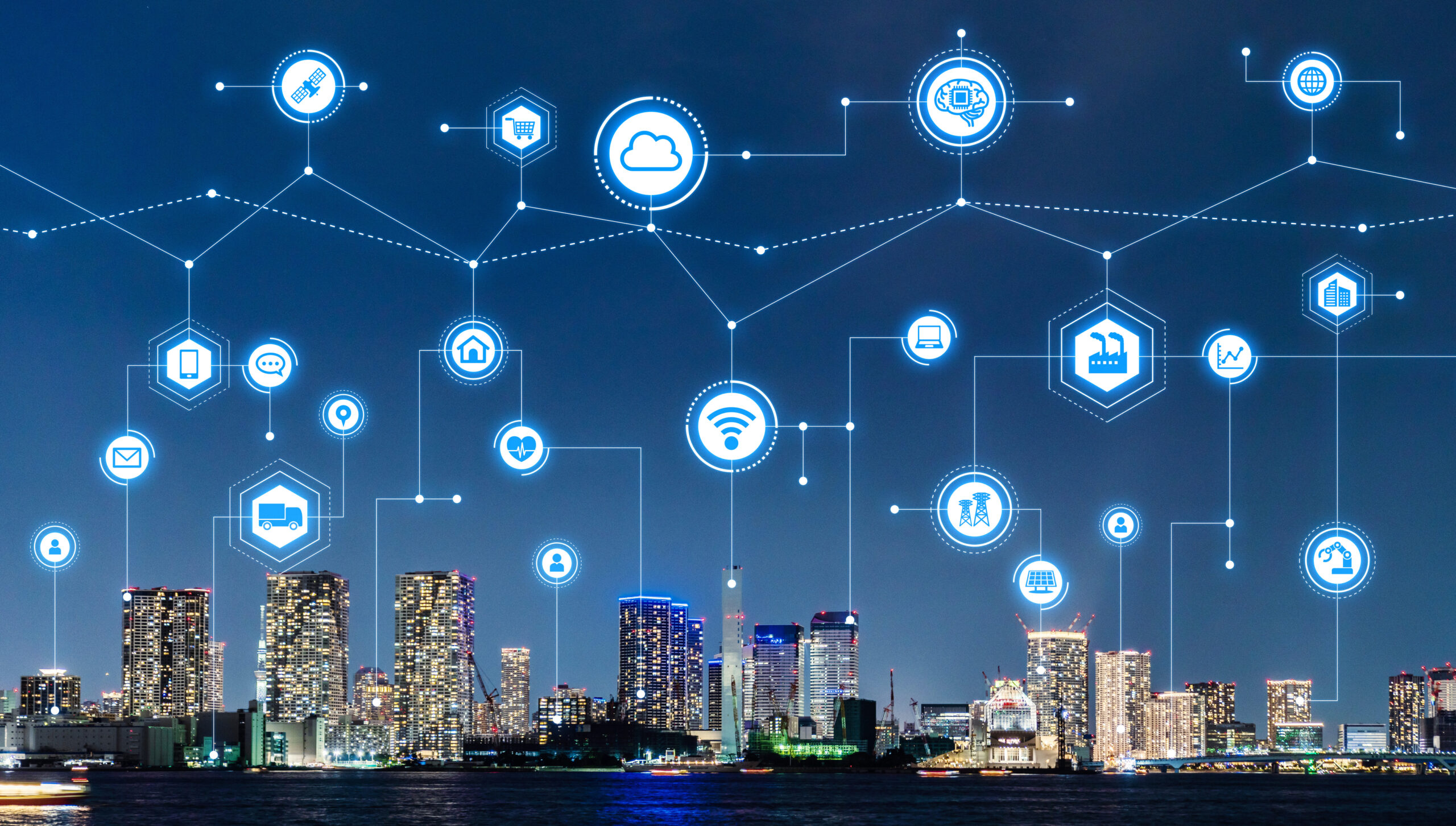As the global energy landscape evolves, grid management rapidly advances to meet demands for greater efficiency, reliability, and sustainability. Innovations in technology and changing energy dynamics are transforming how we oversee and optimize our electrical grids, trends that include integrating distributed energy resources (DERs) and implementing advanced Grid-Edge distributed energy resource management systems (DERMS) and virtual power plants. These technologies reshape grid management by enabling real-time monitoring, optimizing resource utilization, and enhancing grid resilience. Let’s dive into the key trends driving this transformation and explore how these developments contribute to a smarter, more responsive, and efficient energy system for all.
What is Grid Management?
First, let’s define grid management. Grid management involves the processes and technologies used to oversee, control, and optimize the electrical grid—a deeply complex network that includes power generation, transmission, distribution, and consumption. Grid management ensures that electricity is delivered reliably and efficiently from power plants to end-users, maintaining grid stability while addressing various demands and challenges. Currently, the grid is pushed to its limits thanks to the decarbonization and electrification efforts necessary to mitigate the effects of climate change, as well as the increases in inclement weather events and temperature extremes caused by this phenomenon.
Critical to decarbonization and electrification efforts, demand flexibility strategies provide grid management opportunities for utilities to meet demand during peak periods of consumption without needing to turn to peaker plants or expensive peak energy purchases. Currently, grid operators utilize Grid DERMS to manage utility-held assets like solar or battery installations, capital investments owned and managed by the utility. Grid-Edge DERMS complements this strategy through the aggregation of behind-the-meter DER assets useful in residential, business, and commercial demand flexibility initiatives.
Trend #1: Demand Response as a Grid Management Resource
The DOE report Pathways to: Virtual Power Plants Commercial Liftoff found that 80-160 GW of virtual power plant capacity is needed by 2030 in order to meet demand. Currently, U.S. VPP capacity is around 30-60 GW, the majority of which is attributed specifically to demand response programs. In singling out demand response, the DOE is specifically signaling both that virtual power plants represent any aggregation of energy resources for load management, and that demand response is the most effective strategy so far, likely due to the decades of practice program managers have already had.
– Amber Mullaney, VP of Marketing, Virtual Peaker
As such, demand response is increasingly recognized as a valuable grid management resource alongside traditional generation and storage, demonstrably so according to the DOE. Among many demand flexibility initiatives, utilities are integrating demand response into their resource planning and grid management strategies to enhance grid reliability, while decreasing costly peak energy purchases.
Trend #2: The Integration of Distributed Energy Resources (DERs)
Distributed energy resources (DERs) like solar, battery energy storage systems, electric vehicles and EVSE chargers, and smart home devices like thermostats and water heaters are pivotal grid management tools during the energy transition. As of this writing, the DER market as a whole is expected to double by 2027, signaling increased consumer interest. These behind-the-meter assets are useful through Grid-Edge DERMS platforms, which aggregate these otherwise disparate resources for use in demand flexibility programs.
This strategic integration of behind-the-meter DERs is made easier through a vendor with a deep bank of APIs. Furthermore, because DER assets are useful in numerous demand flexibility initiatives, utilities benefit from an all-in-one DERMS platform designed to control DERs by device type, device, location, and more. In fact, flexible dispatching functionality synthesizes this process by affording program managers the capability to group and deploy various demand flexibility initiatives based on location, device, and more: there is no wrong way to manage distributed energy resources, but plenty of opportunities.
Trend #3: Virtual Power Plants and Advanced Grid-Edge Technologies
As noted, the DOE notes that more than double the existing virtual power plant capacity is needed to meet demand. To do that, utilities are deploying more demand flexibility programs than ever, leveraging the potential of distributed energy resources to shift load and shave peaks. Unfortunately, behind-the-meter DER assets have proven risky to grid operators in the past as a reliable solution to meet demand as needed. Logically, utility-held DER assets provide a reliable opportunity to access the energy assets that an operation might need at that moment, leaving behind-the-meter DERs to stagnate.
Fortunately, through Topline Demand Control, utilities can access the next generation of virtual power plant technology. Topline Demand Control (TDC) is a novel combination of a Grid-Edge DERMS, artificial intelligence, model predictive control, and forecasting software. Together, these technologies work to optimize behind-the-meter DERs down to the device level, in turn providing a reliable outcome every time. Through granular, real-time recurring device optimization, grid operators can request a specific energy yield, and Topline Demand Control goes to work ensuring the reliable and reproducible delivery of that outcome. Every time.
Trend #4: Artificial Intelligence (AI) and Machine Learning
According to the Pew Research Center, concern for AI has grown progressively in the last three years, with 52% of survey respondents expressing more concern than excitement. Still, AI is already here in rudimentary forms like Google Assistant and more. But unlike what science fiction would suggest, AI is not a sentience, but a tool limited by the imagination of programmers.
Utilities are increasingly leveraging advanced data analytics and artificial intelligence (AI) to enhance the effectiveness of demand flexibility programs. AI algorithms can analyze vast amounts of data in real time to predict demand patterns, optimize energy usage, and automate responses to grid conditions. Leveraging AI and machine learning for predictive maintenance, demand forecasting, and grid optimization can minimize resource planning, optimize behind-the-meter DERs to ensure a reliable outcome, and so much more.
Trend #5: Consumer-Centric Engagement
Customer communication is crucial to any demand flexibility program: the more customers, the more opportunity for load shifting. As prosumers become increasingly prevalent, utilities are seeing that providing tools and information for consumers to manage their energy usage and participate in grid services is rapidly becoming a norm. Modern, forward-thinking utilities are finding ways to increase engagement with homeowners in demand flexibility programs and dynamic pricing models.
– Amber Mullaney, VP of Marketing, Virtual Peaker
This represents a sea change for utilities, who, as a natural monopoly, have not needed to advertise to their constituents as often. Now, decarbonization and electrification efforts have created both increased demand and customer disintermediation, lowering revenue streams, while decreasing grid resiliency. Utilities can tackle these challenges through a robust communications and marketing strategy that encompasses multi-channel messaging across many media platforms, updating customer service scripts, billing inserts, and incentives.
Trend #6: Battery Energy Storage Solutions
Batteries are an integral aspect of the DER ecosystem, providing the necessary support infrastructure to store and shift behind-the-meter DER energy. As mentioned above, the DER market is experiencing robust growth, including DER technologies like batteries which are already expected to nearly double by 2024. In fact, the EIA anticipates 62.8 GW of battery storage to come online this year, an increase of 55% from 2023. This increased access to battery storage both strengthens grid resiliency and supports energy arbitrage strategies.
Emerging Trends In Grid Management & Demand Flexibility Conclusion
Upgrading the U.S. electrical grid is expected to cost nearly $2.5t by 2035, a figure that promises to only grow with time. Compounding this challenge, climate change costs billions in repair work annually, a figure that in turn also promises to balloon. As non-wires alternatives, grid management strategies are useful in minimizing these costs by using available resources to minimize the need for these costly upgrades. Overall, these emerging trends indicate a shift towards more flexible, responsive, and integrated demand flexibility solutions that are essential for building a smarter, more efficient, and resilient energy future.





